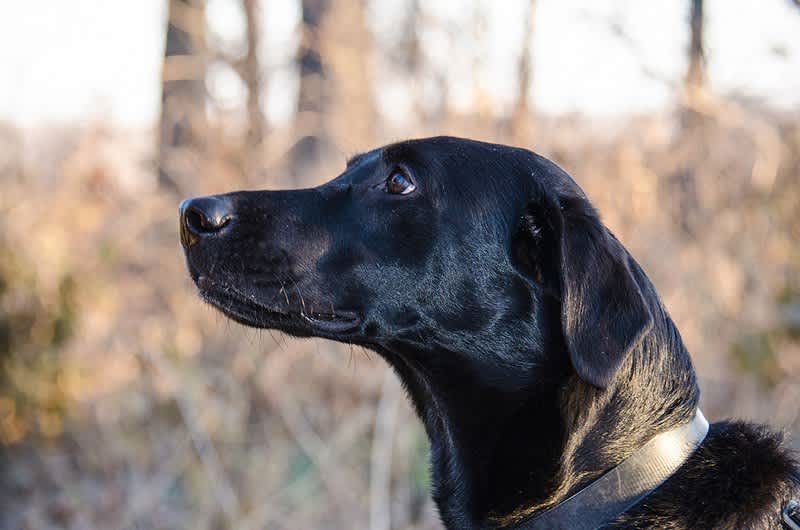How Smart is Your Hunting Dog? Find Out With This Dog IQ Test
OutdoorHub Social 05.05.16

It is a common tendency among hunters to take pride in our dogs. Whether it is their conformation or breeding, we strive to breed and hunt with the best of the best. Another part of a superb dog, however, is intelligence.
We’ve all had a dog in our time that may not have been firing on all of its mental cylinders. Despite being a good dog and trying to please, perhaps things just didn’t click as well as they could. On the flipside, you may have had an exceptionally smart dog who caught on fast and seemed to do everything right. While the extremes of intelligence are usually pretty clear, the dogs that fall in between can be a little harder to read.
If you’re curious as to the intelligence level of your hunting dogs, there are some quick and easy ways to find out how well equipped they are mentally. All it takes is a little bit of your time and a few items from around the house to perform some basic tests. The goal is to try things that are not a part of their normal routine in order to challenge and ultimately assess their problem solving skills. In the end you may conclude that Rover is rather astute or that perhaps he is a lover and not a thinker.
Here are some basic IQ tests to try:
- If you’ve ever talked to your dog and watched their heads tilt to one side or the other, you may have wondered just how well they understand what we are saying. Dogs are usually well-acquainted with their names but lots of times we use a ‘doggie voice’ that has a bit of a sing-song quality when calling them. This happy tone is appealing to dogs and thus frequently gets a response, but a true test of smarts is to say their voice in another room in a normal tone to see if you get a response. Award points as follows:
- Immediately approaches: 4 points
- Rises but hesitates to come: 3 points
- Rises but does not come: 2 points
- Perks up but does not approach: 1 points
- No reaction: 0 points
- With a light towel or blanket, cover your dog’s head. You want to see what his response to this will be, whether he will quickly free himself on his own accord or if he instead waits helplessly to be freed by you. Do not communicate with the dog in any way during this process; do not whistle or call his name. Simply drape the towel and calculate the amount of time he takes to free himself. Award points as follows:
- 20 second or less: 4 points
- 21 to 40 seconds: 3 points
- 41 to 60 seconds: 2 points
- More than 1 minute: 1 point
- If your dog never makes any effort to get free and instead takes a nap: 0 points
- To test response time to subtle cues, grab something related to your dog’s favorite activity. The easiest item for most of us would be a leash or a ball. Do not indicate to your dog that anything is about to happen but instead nonchalantly handle the item you’ve chosen and wait for a response. Award points as follows:
- Immediate response: 4 points
- Gradual excitement: 3 points
- Response that only occurs if you step up your behavior: 2 points
- Watching but not becoming active: 1 point
- No reaction: 0 points
- Next is to determine your dog’s perception of body language and what it means. For this test, start with a straight face while looking at your dog, then let a smile spread across your face as he is focused on you. Award points as follows:
- Cheerful approach with tail wagging: 4 points
- Timid approach without tail wagging: 3 points
- Dog appears to notice the change but does not come: 2 points
- Dog leaves the area: 1 point
- No reaction: 0 points
- All dogs have a favorite treat. For this test, take a preferred item and hide it out of sight but in an easily accessible location, such as underneath a cup. Let your dog watch as you do this and observe if he can figure out how to retrieve it. Based on his reaction, award points as follows:
- If the item is retrieved in 20 seconds: 4 points
- If it takes 21 to 40 seconds: 3 points
- If it 41 seconds or more: 2 points
- If your dog knows where the item is but can’t grasp how to access it: 1 point
- If your dog makes no effort: 0 points
Upon completion of testing, take a look at the points your dog scored. If you see mostly 4’s, you have a dog with a high IQ. Dogs that score mostly 3’s are pretty smart. If mainly 2’s are achieved, those should be considered average with 1’s and 0’s below average.
Even though some hunting dogs may lack a little bit in the brains department, they more often than not make up for it with natural instinct and drive. Should your test results be less than stellar, remind yourself that if nothing else, conducting these experiments create a positive mental stimulus and foster bonding. Besides, a dog that knows and does its job is what matters most at the end of the day even if he is not quite deserving of a nickname such as Einstein.

